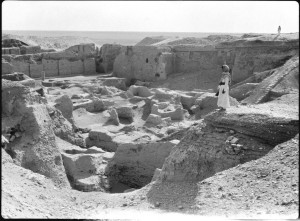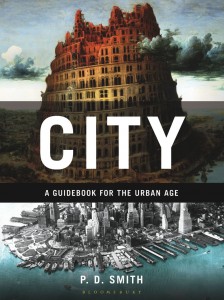By P.D. Smith
 While writing City: A Guidebook for the Urban Age, two ideas were at the forefront of my mind. First I wanted to celebrate one of humankind’s greatest achievements. Cities are remarkable technological and architectural creations. It’s easy to forget this, especially if you have spent your life in cities. I wanted the book to convey something of the awe that Heinrich Heine experienced on arriving in what was, in 1827, the greatest city on earth:
While writing City: A Guidebook for the Urban Age, two ideas were at the forefront of my mind. First I wanted to celebrate one of humankind’s greatest achievements. Cities are remarkable technological and architectural creations. It’s easy to forget this, especially if you have spent your life in cities. I wanted the book to convey something of the awe that Heinrich Heine experienced on arriving in what was, in 1827, the greatest city on earth:
‘I have seen the greatest wonder which the world can show to the astonished spirit; I have seen it, and am more astonished than ever – and still there remains fixed in my memory that stone forest of houses, and amid them the rushing stream of faces, of living human faces, with all their motley passions, all their terrible impulses of love, of hunger, and of hate – I am speaking of London.’
Second, I wanted to highlight the importance of history. For all their amazing infrastructure, cities are human environments. As you walk through a city, you become aware of the traces of countless past lives. The proto-Situationist Ivan Chtcheglov has expressed this rather beautifully: ‘All cities are geological and three steps cannot be taken without encountering ghosts’. From the faded remains of old advertisements painted on walls (ghost signs) to the echoes of age-old dreams of a shining city on a hill in street plans and architecture, cities are rich storehouses of human history.
Nowhere is that more apparent than in the twelfth-century basilica of San Clemente in Rome. If you go down into the crypt, you can walk along the nave of a church built before AD 385. But venture deeper still and there is a nearly two-thousand-year-old temple to Mithras. In the chill gloom of this subterranean space, the ghosts of the city become an almost tangible presence.
By the end of the nineteenth century, London was the largest city the world had yet seen – a sprawling, smoky metropolis of more than six million people. Britain was the first country in which more than half of the population lived in cities. But it was not until the beginning of the twenty-first century that the world as a whole crossed this threshold. Now the largest city is Tokyo, a megacity of some 36 million people, slightly more than live in Canada. In the coming decades, Mumbai will probably exceed even this once unimaginable scale.
The world is entering an unprecedented urban age. Cities will face huge problems, such as megaslums, climate change, and dwindling fresh water supplies. But cities have had to deal with slums and with environmental crises before. The earliest cities in Mesopotamia also had to contend with a changing climate. Unfortunately, their attempts to deal with it through irrigation schemes ultimately proved fatal – a clear warning to us from the past.
The fate of these first cities is a reminder that, in time, even the greatest cities return to the dust from which they emerged: Ur, Babylon, Mohenjo-daro, Tenochtitlán and others. When we walk through today’s streets, beneath our feet lie yesterday’s cities and I hope my book shows how much we can learn from our urban past.
P. D. Smith is the author of four books, including Doomsday Men: The Real Dr Strangelove and the Dream of the Superweapon. He is an Honorary Research Associate in the Science and Technology Studies Department at University College London. His website is www.peterdsmith.com.
Image: Ur, view of the ruins, 1932. Library of Congress, Call Number: LC-M33- 4697 [P&P].

